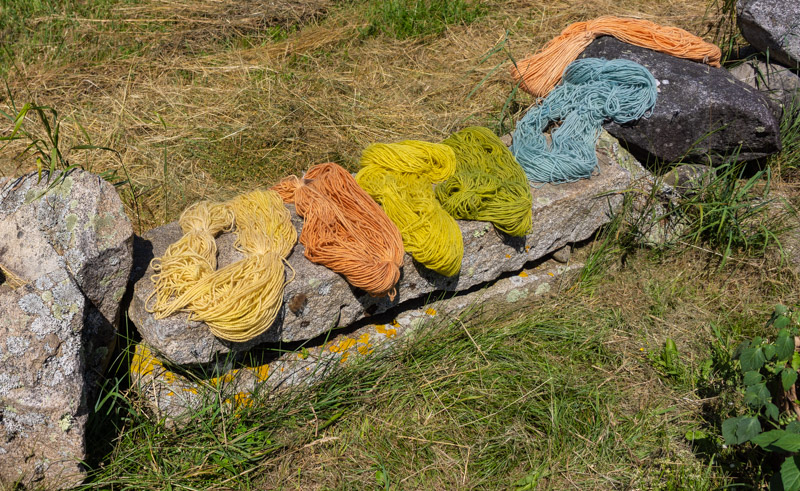
goldenroad plus woad, woad, lady’s bedstraw.
Our dye garden includes woad, Japanese indigo and madder. Even given the effects of climate change, which has dramatically affected what we raise and how we raise it, we have been unable to successfully raise weld. On the other hand, woad and madder do extremely well. Japanese indigo is an annual and does quite well during the growing season but fails to set seed.
We offer woad seed and three -year old madder root for sale.
Woad, a biennial, self sows readily. It is a gorgeous early spring blooming plant, bright, sunshine yellow and a welcoming spring plant. It is classed as invasive in several western states. In our climate it self seeds but is not difficult to control.
Woad has a long and fascinating history. It was THE source of blue die in Europe until importation of indigo began in the 16th century from India. It contains the same dye as the indigo plant, but less of it.
Madder is a viney and self sowing dye plant. Dyers get the best range and color intensity using three-year old madder root. It produces orange to pink shades. Madder can be trained on low profile trellis.
Weld is the traditional European source of yellow dye. We continue to grow weld in different areas of our dye garden. However, this perennial rarely survives more than two winters and is subject to powdery mildew. Weld is a pretty plant with a tall stalk, yellow flowers, and upright habit.
We also dye wool with wild plants from the farm. Ladies bedstraw is a close relative of madder. It grows wild in Maine pastures, including ours. The root dyes wool orange. Goldenrod dyes wool bright yellow. If Europeans had had goldenrod it might have supplanted weld as a dye plant.